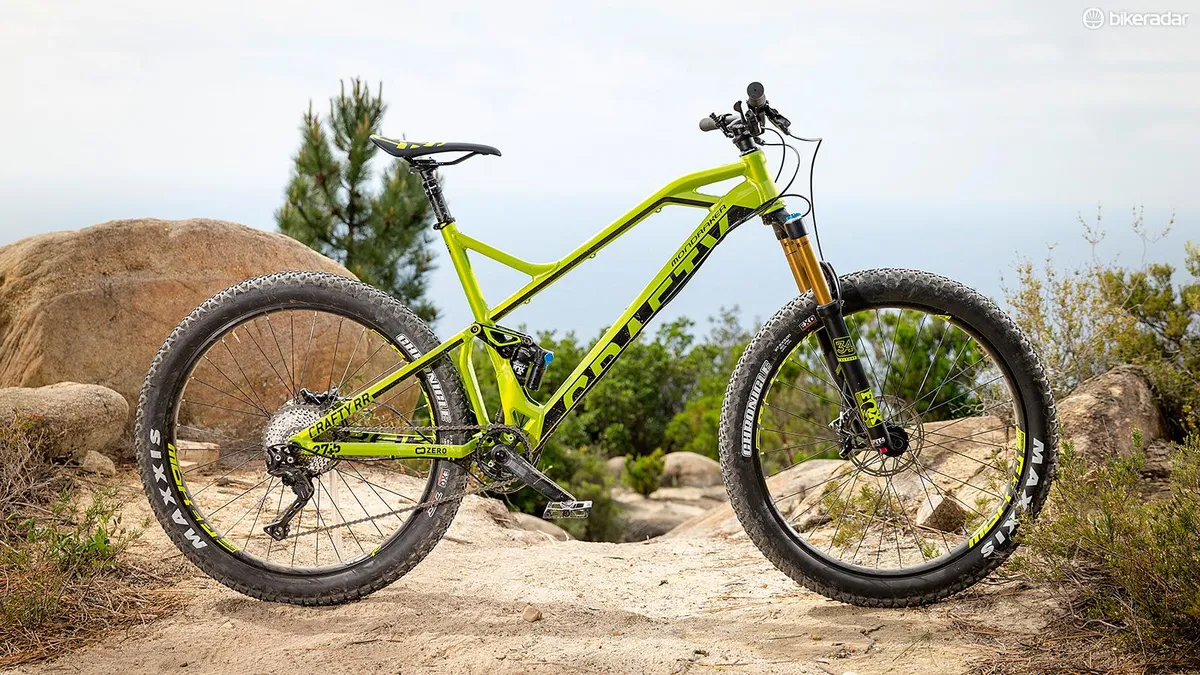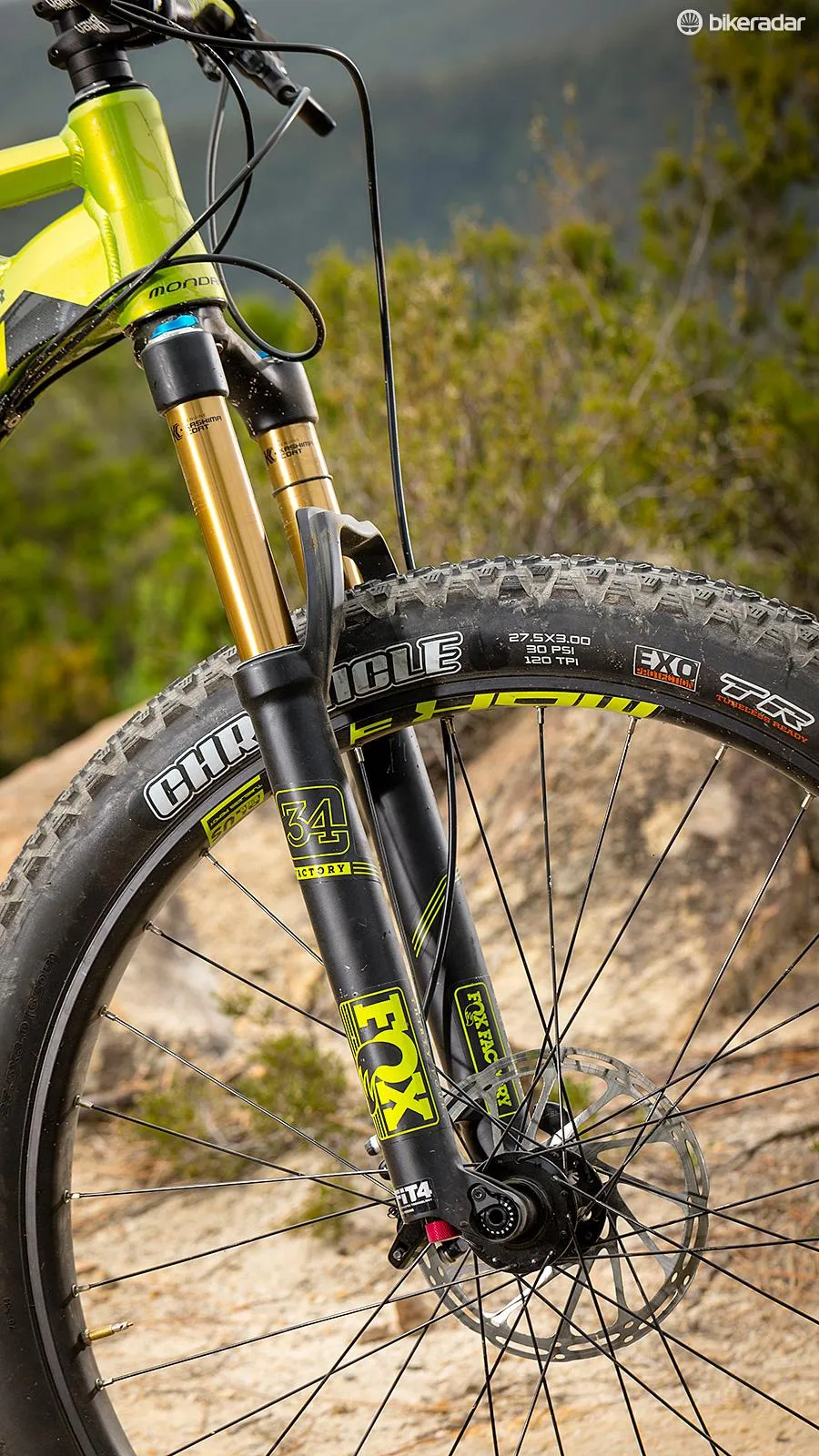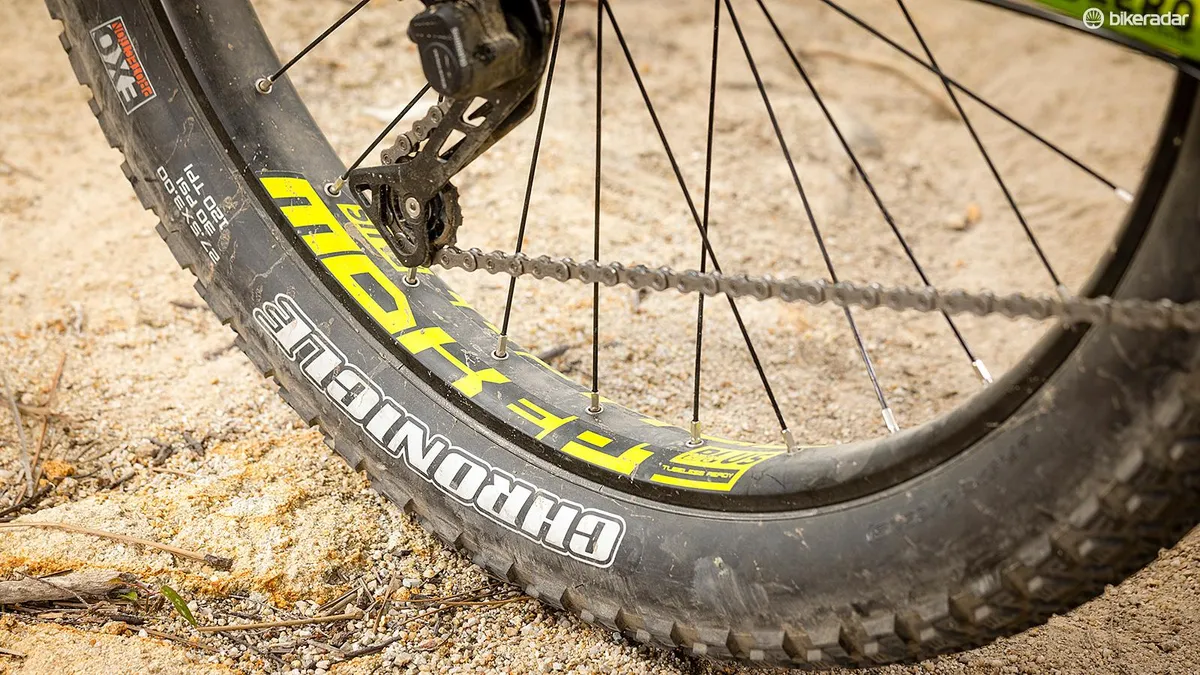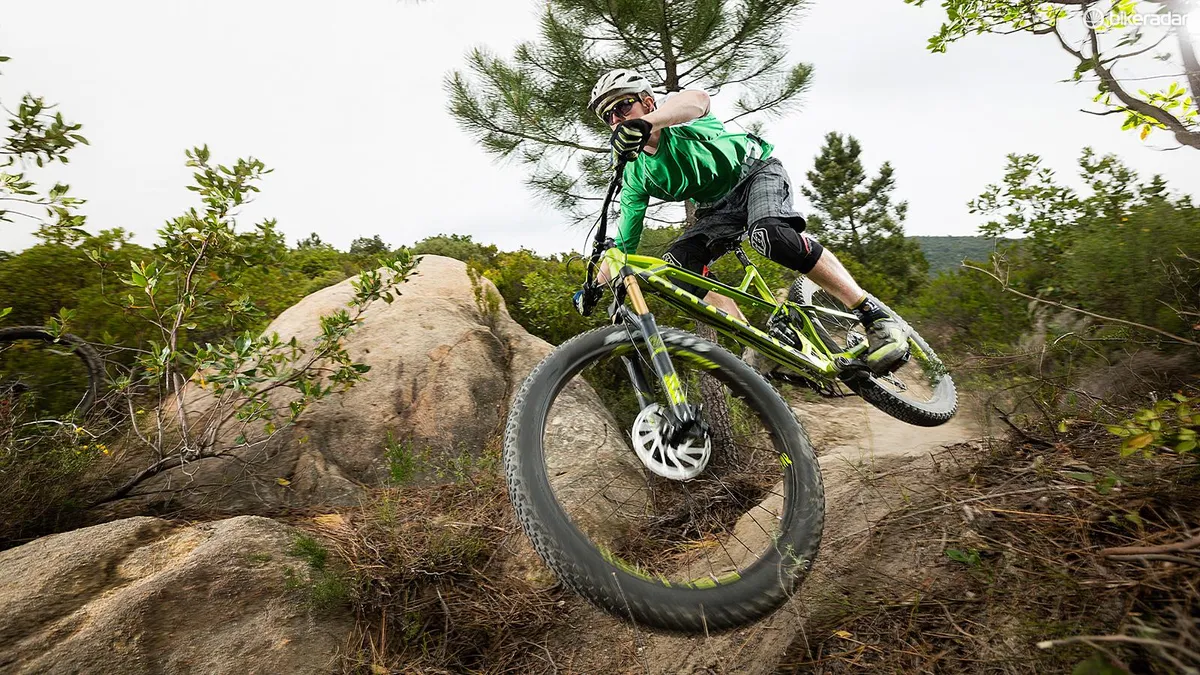Mondraker’s Forward Geometry combined with 27.5+ wheels sounds like a recipe for unrivalled stability and speed. But how does it all come together in practice?
Full-alloy frame
The only full-alloy frame on test might seem low-rent at the price point, but you're really no worse off. What’s important is the stretched-out top tube, which offers a roomy riding position and the benefits of a super-short stem.
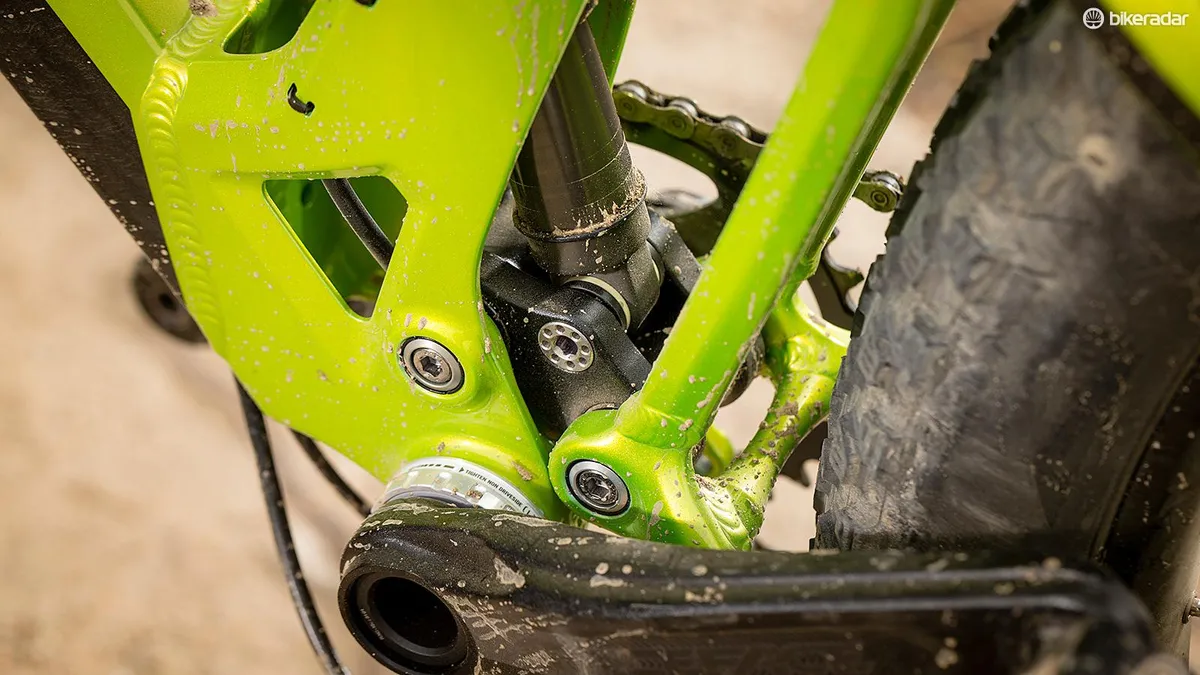
Also, Mondraker’s Zero suspension system delivers a great balance of pedalling efficiency and suppleness. The 12x157mm rear spacing means you’re stuck with the weighty stock wheels, or a custom-build around a DH hub.
Those wheels are pretty hefty, at 2295g unfurnished. They’re 40mm wide, though, and the rims have proven resilient. Mondraker’s choice of Shimano gearing and SRAM brakes is an odd coupling, but both perform well. Fox provides the suspension with the top-spec version of the 34 fork, alongside the non-Kashima Float X Evol shock.
Dynamic riding position
Straight away, the Mondraker feels different. Despite the 30mm stem, the really long (530mm in XL) reach throws open the arms for a dynamic riding position which is a breath of fresh air for tall riders, and has won many fans among our shorter testers too.
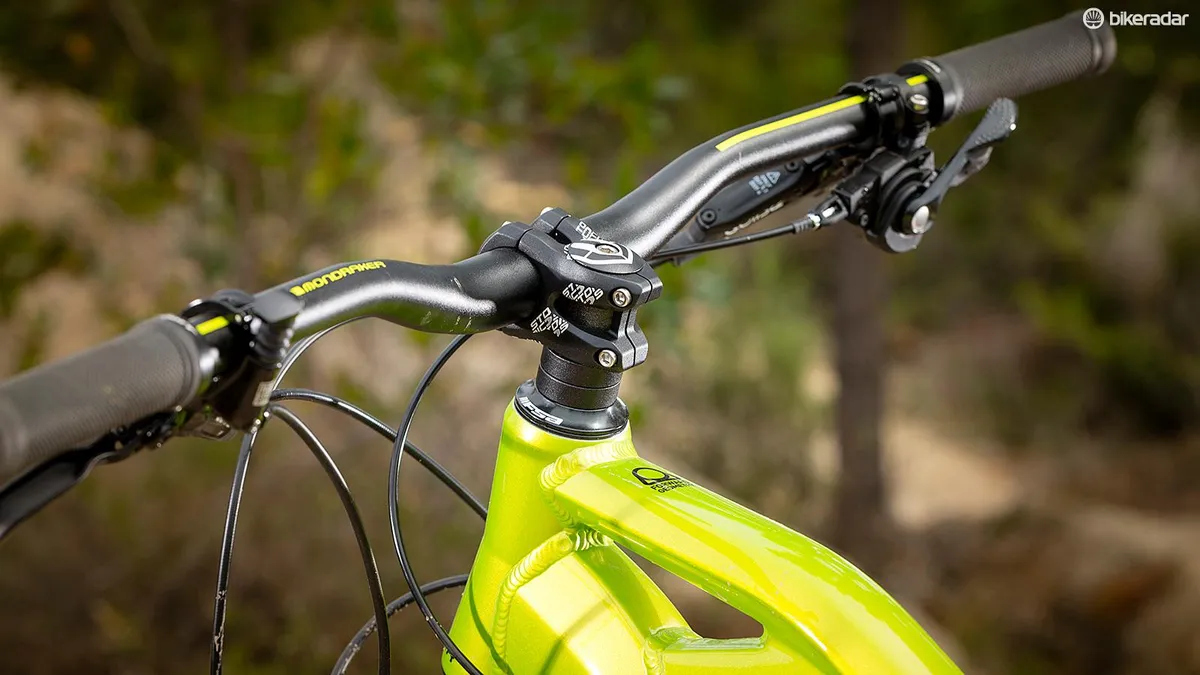
This opens up the lungs when climbing, even with the saddle shunted fully forwards on the rails to maximise the steep seat angle. Combined with Mondraker’s efficient-yet-supple suspension system, this made the Mondraker a standout-comfy climber when things got steep and technical, despite its heft.
Meanwhile, the short stem makes the steering quicker and more predictable. Along with the steep 68.5-degree head angle, this overrides the inevitable increase in wheelbase for a surprisingly agile ride, which tackled really tight switchbacks with confident agility.

For anything other than DH bombing, the long front centre provides bags of loose-ground stability and a planted feel, despite the steep head angle and fairly high (340mm) BB.
A case for a slacker head angle
However, that steep head angle somewhat hampered the performance of the fork. When faced with square-edged hits, a steeper fork is more prone to bend backwards, rather than slide smoothly through its travel. Fox’s 34 fork is not the stiffest or the best damped either, which makes matters worse.
Because of this, the front end felt quite harsh over the fast and rocky terrain of Sanremo, Italy – a place DH pros come to test their suspension and wheels (often to destruction), and where we were putting a number of plus-bikes through their paces. It’s frustrating how the bike’s monster-trucking potential is limited by the front end. We’d happily sacrifice some of that nimbleness for a slacker head angle for smashing through rocks, and would prefer a stiffer fork too. An aftermarket angled headset could be a great upgrade.
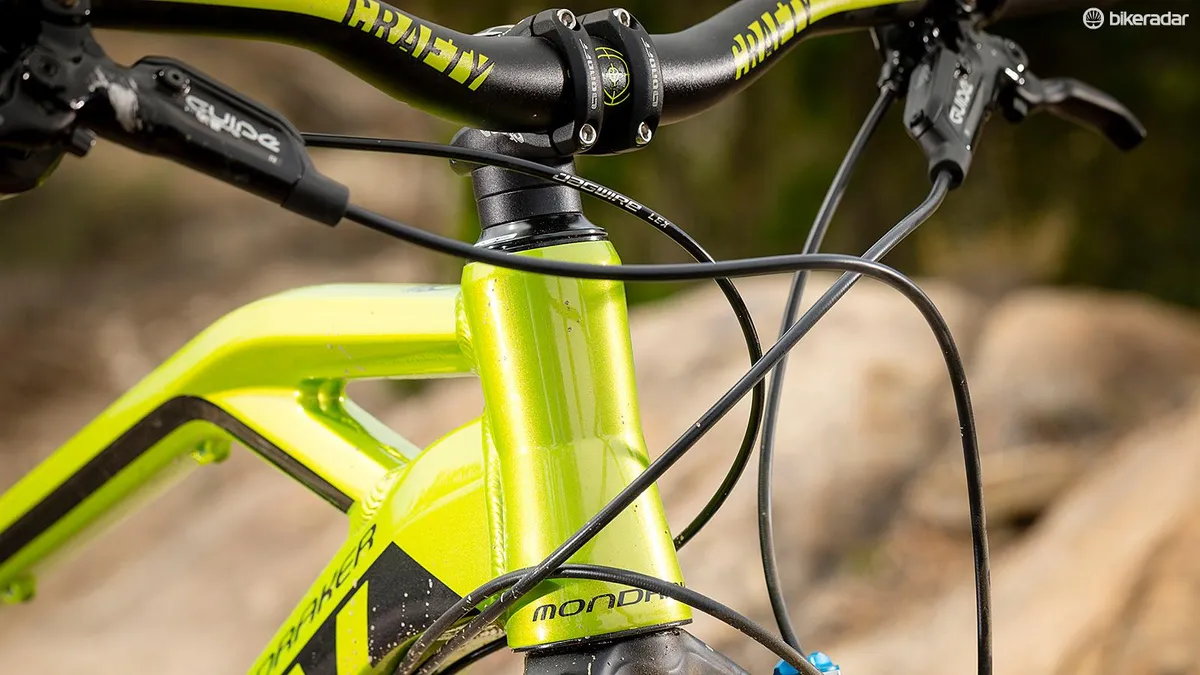
Meanwhile, the rear suspension works with the Float X shock to deliver excellent sensitivity, with a supple beginning stroke, and just enough support through the mid-stroke. It’s also really stable and efficient under power, without being too restricted by chain-growth, helping it feel noticeably sensitive through chatter.
Maxxis’ Chronicle tyres are distinctly lacking in cornering bite, and they felt drifty in UK soil and Italian dust alike. The long geometry extends the margin of error between initial slide and washing out, though, allowing room for some grin-inducing loose moments. They roll fast, too – bagging us a couple of trail-centre KOMs on our local test route.
We’re not fans of the own-brand grips or the 760mm bars, and the Shimano shifter doesn’t fit in an ergonomic position either side of the SRAM brake lever. However, the Shimano XT transmission worked well, while the Guide R brakes performed brilliantly in Sanremo, remaining refreshingly predictable and consistent.
Thanks to stable geometry and beautifully balanced rear suspension, the Crafty is a stonkingly fast descender and a comfortable climber too. For relatively mellow trails it’s an absolute blast, but when things got seriously rough the flexy fork and steep head angle were frustratingly limiting. With an angled headset and a cockpit swap, you’d have a truly astonishing enduro weapon on your hands.
